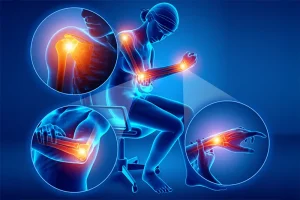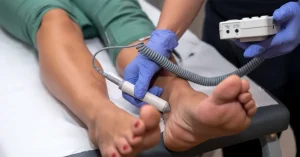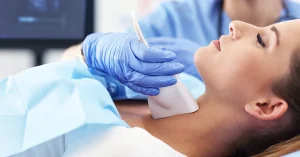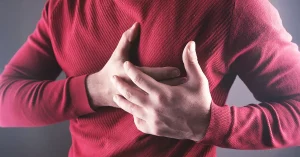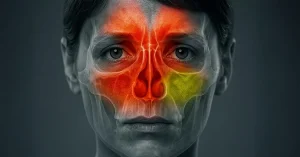What Are Hernias?
Hernias are conditions caused by sustained and continuous physical exertion, in particular. However, although hernias occur mainly as a result of sustained and continuous activities, they can develop at any age, including in babies, and affect both men and women.
When an organ protrudes completely or partially from its normal cavity through a natural or artificial opening, it creates a bulge in that area, which is visible on the outside. This bulge causes the well-known medical condition called a hernia.
What Are the Symptoms of Hernias?
The symptoms and signs of hernias are clear:
- Swelling appears in the abdomen or groin, depending on the type of hernia the patient has, and this increases over time and with sustained physical effort.
- Discomfort occurs in that area.
- The hernia is quite sensitive to touch and causes constant pain, but especially when the patient exerts themselves or lifts weights. There are also cases where the hernia does not hurt.
- As the pain increases, nausea may occur, which can lead to vomiting.
- Severe cramps are also present.
- The volume and circumference of the abdomen increase in the case of an abdominal hernia.
Why Do Hernias Occur? What Are the Causes of Hernias?
Hernias can result from:
- Obesity
- Malnutrition
- Tuberculosis
- Diabetes mellitus
- Cystic fibrosis
- Chronic constipation
- Chronic cough
- Prostate adenoma
- Ascites
- Large tumors
- Pregnancy
- Other causes influenced by congenital or metabolic factors
Read more: Gastric Sleeve – What It Is, Advantages, How Much Weight You Can Lose, and Diet After Gastric Sleeve
How Is a Hernia Correctly Diagnosed?
A hernia is correctly diagnosed through a clinical examination. The doctor physically examines the patient. When there is doubt between a hernia and the appearance of a tumor, imaging tests are performed. These tests help confirm the presence and type of hernia.
How Is a Hernia Treated?
Hernias are treated only surgically, either conventionally or laparoscopically. Rarely does a hernia heal spontaneously on its own. The less advanced the hernia, the easier it is to correct, and the risk of complications is considerably reduced. Hernia surgery is very advanced, and hernias are successfully treated today.
How Many Types of Hernias Are There and How Do They Manifest Themselves?
Epigastric Hernia
Also known as linea alba hernia, it is located in the lower part of the chest, just above the navel. The protrusion usually appears in the abdominal wall and does not exceed the size of a golf ball.
Femoral Hernia
This is the second most common type of hernia and affects women more than men. The protrusions form just below the groin and are located somewhere in the middle of the thigh.
Umbilical Hernia
Umbilical hernia accounts for only 10% of all hernia cases and mainly affects children and overweight or obese women over 60. The protrusions appear around the navel. Babies are usually affected when the umbilical cord does not close completely, but in adults, umbilical hernias are caused by obesity, pregnancy, or a medical condition called ascites, which is excess fluid in the abdomen.
Incisional Hernia
Incisional hernia is rarer and occurs at the site of abdominal postoperative scars. This type of hernia can also occur several years after surgery.
Ventral Hernia
Ventral hernia manifests as an opening in the abdominal wall muscles. Although it is a hole, it also causes swelling that is usually visible in the center of the abdominal wall.
Giant Hernia
Giant hernia is actually a ventral hernia or an incisional hernia caused by injury or trauma. An open abdomen that heals poorly or incorrectly can cause a giant hernia.
Incarcerated Hernia or Strangulated Hernia
An incarcerated hernia occurs when a portion of the intestine becomes trapped in the hernia. A strangulated hernia is rarer but particularly dangerous because it cuts off the blood supply to the intestine. Once deprived of blood, the intestine can lead to gangrene, which may cause the intestine to rupture, leading to peritonitis, an infection of the abdominal cavity. Untreated peritonitis can cause the death of the patient.
Sports Hernia
Sports hernia involves the rupture of muscles, tendons, or ligaments in the lower abdomen. This is not a weakness or opening in the abdominal wall but an actual rupture. The pain is located in the groin, just like in an inguinal hernia.
Inguinal Hernia
Inguinal hernia is the most common type of hernia and is most often found in older men. Of all hernia cases, 80% are inguinal hernias. The bulges form in the scrotum or in the inguinal fold.
Laparoscopic General Surgery at VenArt Clinic
Laparoscopic general surgery is a particularly important department at VenArt Clinic. Surgical procedures are performed by highly experienced doctors who have specialized in renowned clinics in Europe, the US, and Israel. Thanks to innovative medical techniques, many conditions can be treated using minimally invasive laparoscopic methods. As a result, over 60% of patients can be treated on an outpatient basis.
For more details, please visit the general surgery section of the clinic’s website.
VenArt Clinic works with various insurance providers, including Signal Iduna, NN Asigurari, Star BT, Sano Pass, Medicover, and Allianz. Schedule a consultation with our expert surgeons at VenArt Clinic to discuss your hernia diagnosis and explore the most effective treatment options.
Medical Consultant: Dr. Oleg Cebotari





